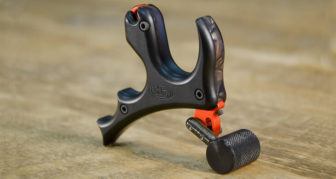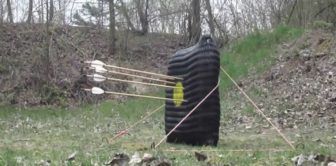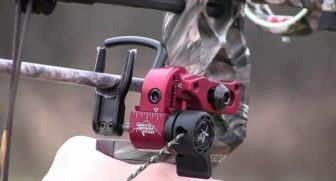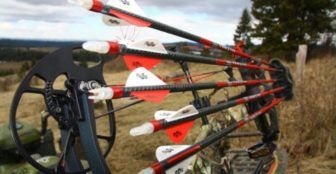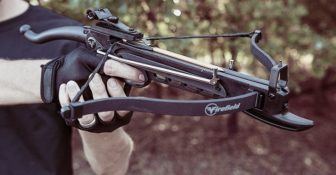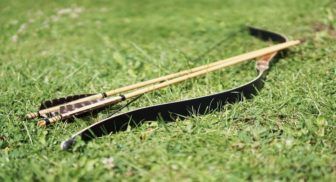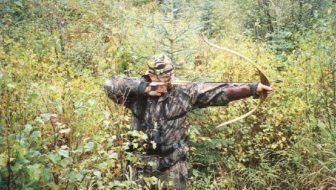An Essential List of Archery Equipments You Should Prepare
The long list of archery equipment can often get confusing for newer archers. It's not just because there's so many of them, but because there are so many different types of each equipment.
Following is a list of the most important and necessary archery equipment for any archer. This list is definitely not comprehensive but it presents you with everything necessary to effectively get you into archery.
1. Bow
Photo: letsmoveschools.org
The bow is, of course, the most important archery equipment of them all. There are 4 major types of bows to choose from, with each type having its advantages and disadvantages over the rest.
Following is an overview of these 4 types:
Longbow . Also called traditional bow, the longbow is the oldest type of bow and the easiest to shoot, but it's also the least precise of all bow types. Today, it's shot mainly by archers who have an emotional attachment to classic archery.
Recurve Bow . The recurve bow has been in use since many millenniums. It's made up of a rigid handle called a riser and two forward-curving limbs, which bend and store energy when the bow gets drawn.
The recurve bow is more accurate and powerful than the longbow and it can also accept more accessories on its riser, as well.
Compound Bow . A compound bow is any bow which uses cams on the ends of its limbs to create a mechanical advantage or leverage. This makes it easier to shoot arrows at a higher speed and a higher precision.
It's the newest type of bow and it got developed in the 1960s, but it has seen tremendous improvements since then, which have turned it into a very advanced archery tool.
Crossbow
.
The crossbow has been around for many millenniums as well and its major features are horizontal limbs in front of a rifle-like wooden construction.
There are different crossbow styles and they are the most powerful and precise of all bow types, but some archery enthusiasts don't consider crossbows as real bows.
2. The Bow String
3. Arrows
Every bow needs an arrow, but just like there are different types of bows, there are also different types of arrows, and they're grouped as follows:
-
Wooden Arrows.
These are the oldest form of arrows known to man. Only traditional bow enthusiasts still use them today.
- Fiberglass Arrows. Fiberglass is a very strong material and therefore guarantees that the arrows will not break easily. The material is also heavy, so it's not often used by professionals. It's considered the best material for beginner arrows because it's strong and cheap.
-
Aluminum Arrows.
The nice thing about aluminum arrows is that they are lightweight and therefore, fast. On the other hand, they can bend, although they can also get straightened easily.
- Carbon Arrows. Carbon arrows are more lightweight than aluminum arrows and therefore, faster than them. Unlike aluminum arrows though, carbon arrows don't bend as easily. On the flip side, carbon arrows cost much more than aluminum arrows.
4. Arrowheads
Photo: Huntingdoor
Every arrow needs the right type of tip, so it's better fitted to a particular task. The two major types of arrowheads are field-points and broadheads .
- Field-Points. These arrowheads are for practice shooting into foam, bag, and paper targets. They are narrow and have a sharp tip for easy penetration, but nothing else.
- Broadheads. These arrowheads are wide and have very sharp edges. There are different broadhead designs but they all have the single purpose of destroying as much muscle and drawing as much blood as possible. Broadheads are for hunting.
- Others. There are, of course, other types of arrowheads, and these include the bullet head, the blunt head, judo head, fish point, and even the suction cap head for kids.
5. Bow Accessories
Aside from a simple bow with its string and arrow, certain accessories can get attached to the bow to increase its shooting precision and overall effectiveness. A list of such archery equipment is as follows:
-
Bow Stringer/Bow Press.
These are very important bow accessories because they help you to safely string and un-string the bow. Bow stringers are mostly used for recurve bows, while bow presses find use with compound bows.
A bow stringer is especially important for recurve bows because they often need un-stringing for storage or transport. Most good recurve bows will ship with a stringer anyway.
-
Bow Sight.
It helps to increase your precision as an archer. Compound and recurve bows can get outfitted with
a pin sight
, which can use anywhere from just one pin, up to five or more pins for measuring distance and arrow drop.
- Stabilizer. Recurve and compound bows can benefit from a stabilizer which gets attached to their risers. This helps in keeping the bow steady and achieving more precise shots.
-
Arrow Rest.
The job of
an arrow rest
is to hold your arrow steady while you focus on your target. There are many types of arrow rests, each with its advantages and disadvantages, you'll just have to find what works for you.
-
Silencers.
If you plan to hunt with your
bow
, then investing in a silencer is a good idea, because it helps to keep your shots as silent as possible and thereby guarantee you a better hunting success rate.
- Crossbow Scope. Given their design and semblance to rifles, crossbows can get outfitted with scopes. These crossbow scopes feature different reticles but they all work to help the archer in gauging arrow drop in their own ways.
6. Other Archery Equipments
Photo: Bear Archery
Following are more archery equipment, all of which are neither necessary for shooting a bow nor improve the archer's precision or efficiency.
- An arrow quiver for holding and transporting your arrows.
- A bow carrying case for transporting the bow from place to place.
- String wax for the bowstring to keep it flexible and prevent breaks.
- A target to shoot at, which includes a paper bullseye, a bag, foam, or other targets.
- Finger tab or rollers to make the shooting smoother.
- An arm-guard to protect the arm from the bowstring or arrow's fletching.
- A chest-guard to protect an archer's chest and keep clothing away from the bow.
Conclusion
As you can see, there are lots of archery equipment to consider when putting your gear together. Some are more important than others, but they all have their uses, advantages, and disadvantages.
The good news is that you'll easily master these different types of archery equipment with time and then you'll have the ability to set up your own archery gear in a way that truly mirrors your personality.
